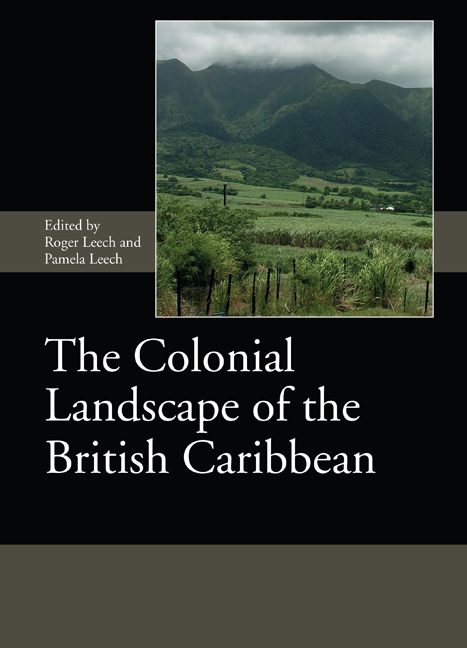12 - The Colonial Landscape of Mountravers and Adjacent Plantations
Published online by Cambridge University Press: 31 March 2021
Summary
SUMMARY: An archaeological field survey of just over 5,000 hectares, within the parish on Nevis of St Thomas Lowland, part of a British Academy funded project undertaken by the University of Southampton and Bristol City Museums, focused on the landscape of the plantations of Mountravers and those to the south and north. Using methodologies developed in Britain for rapid archaeological field survey and historical documentation, the houses, yards, works, and sometimes gardens of at least nine plantations were identified and mapped, together with connecting roads, bridges, and a fort. Identification of slave village sites was confined to Mountravers itself. Field survey results were linked to documentary sources in both Nevis and Britain. Recommendations are then made for future preservation and presentation linked to those recently made by the UNESCO funded International Committee for Monuments and Sites (ICOMOS) to the Nevis Island Administration for the protection and preservation of the diverse culture and heritage of the island.
INTRODUCTION
A survey of the landscape of Mountravers and the plantations to north and south was the second of the two sample surveys undertaken for the British Academy funded colonial landscape project (Preface), the first being the survey of St Mary Cayon and Christchurch Nicola Town on St Kitts, already discussed by Philpott (Chapter 7). This chapter is written so as to complement rather than repeat the earlier chapters.
As on St Kitts, the survey was set within the strategic objectives set out in the Preface (p. xx), specifically here: -
1 To undertake a reconnaissance survey of the 17th-and 18th-century colonial landscape of the landscape of Mountravers and the plantations to north and south
2 To identify the extent to which plantation centres have been abandoned or have changed through time, from the 17th to the 20th centuries
3 To identify the archaeological and above ground remains of the slave villages for the plantations
The survey area (Fig. 12.1) was located within the recorded north and south boundaries of the plantations to the north and south of the Mountravers estate as defined in modern times. Chronologically, the survey concentrated on the periods up to the introduction of steam technology for sugar processing in the 19th century.
- Type
- Chapter
- Information
- The Colonial Landscape of the British Caribbean , pp. 233 - 268Publisher: Boydell & BrewerPrint publication year: 2021



